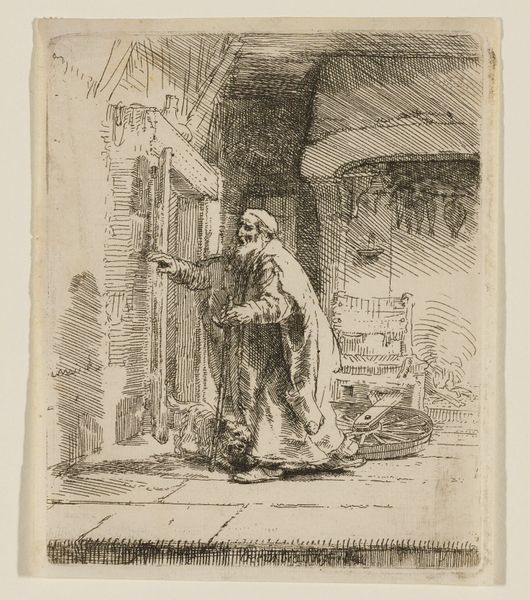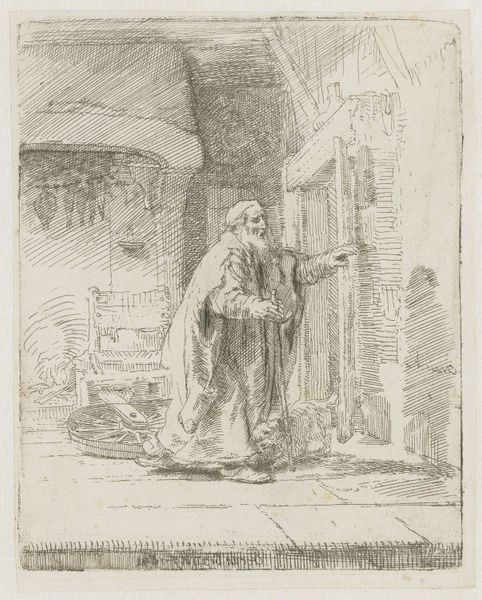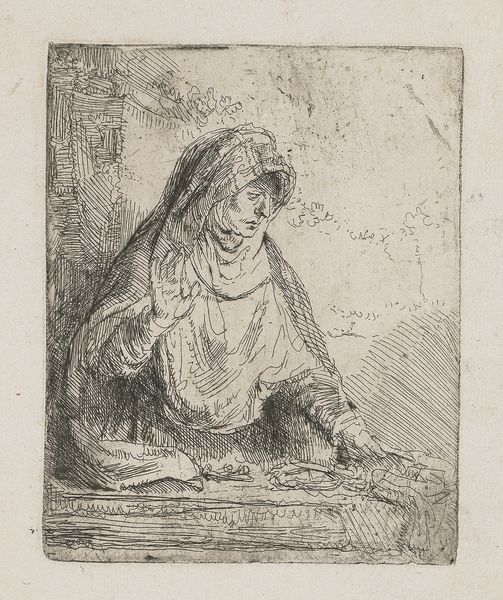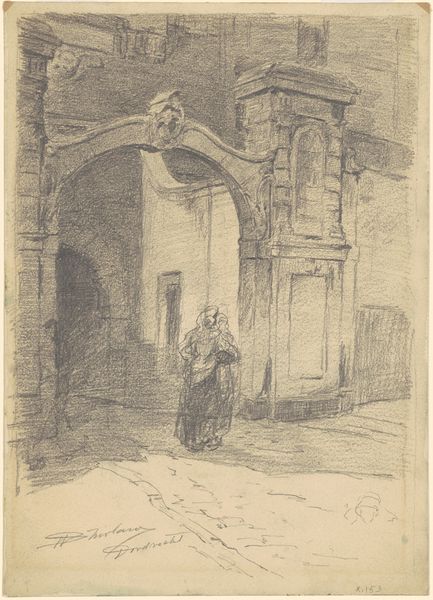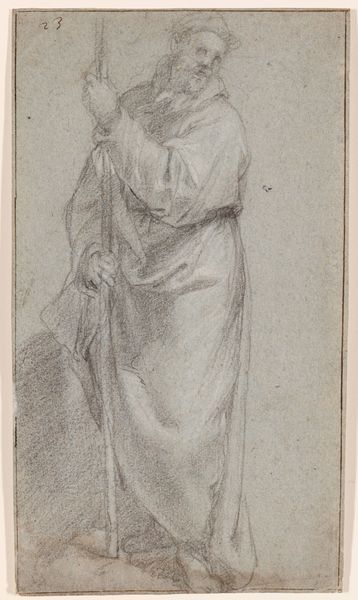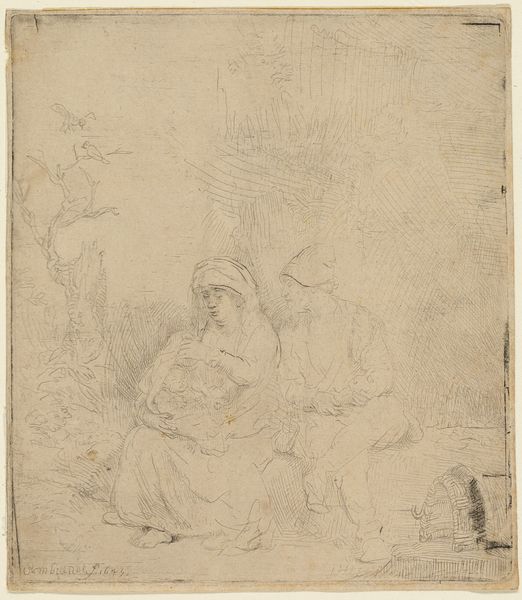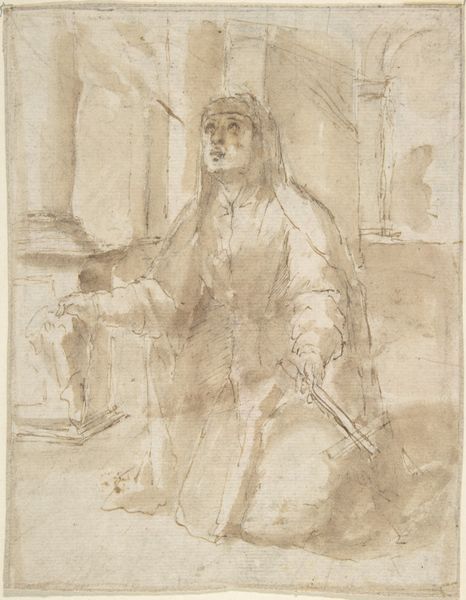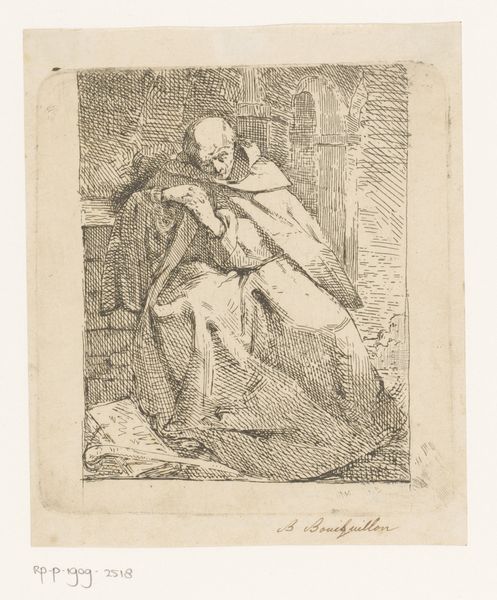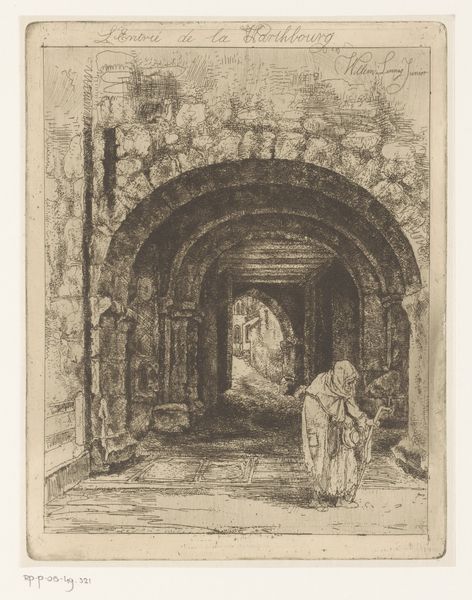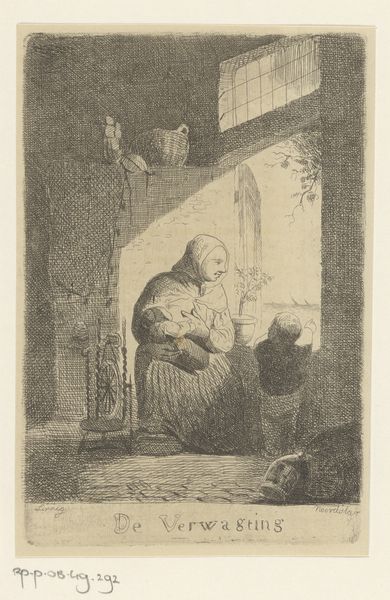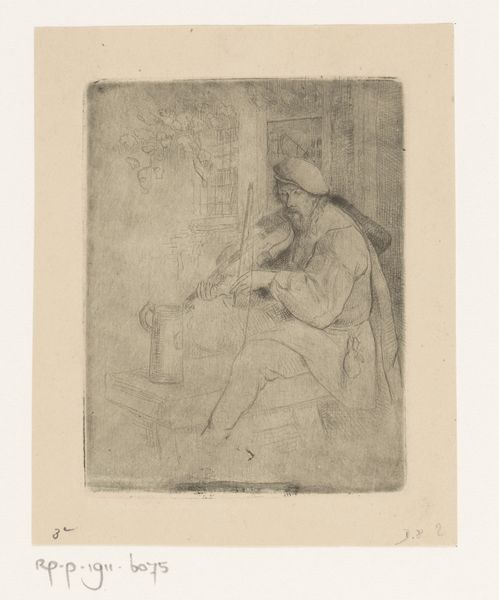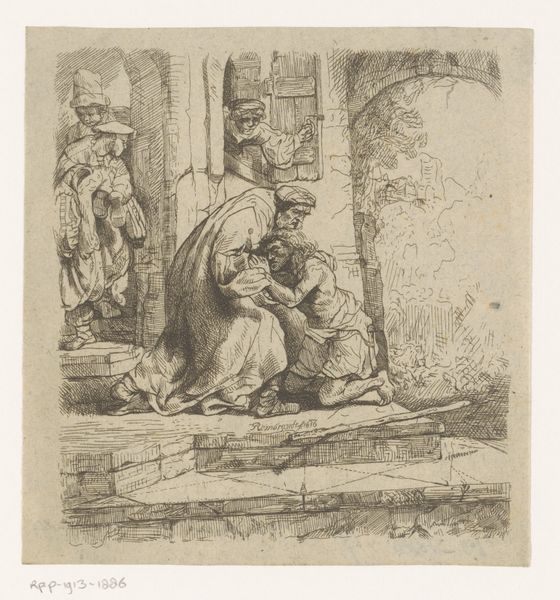
print, engraving
#
baroque
#
dutch-golden-age
# print
#
figuration
#
line
#
history-painting
#
engraving
Dimensions: 161 mm (height) x 129 mm (width) (plademaal)
Curator: We're looking at Rembrandt van Rijn's etching, "The Blindness of Tobit: the larger plate," created in 1651. It's currently held at the Statens Museum for Kunst. Editor: My first impression is one of muted drama. The scene feels contained, even claustrophobic, rendered in delicate yet assertive lines. Curator: Rembrandt frequently revisited biblical stories, aligning them with the human condition within the Dutch Golden Age. "Tobit," from the Book of Tobit, tells of a righteous man who loses his sight. Consider Rembrandt's positioning within a rapidly Protestantizing society and its complicated relationship with religious iconography. Editor: Note the artist's mastery of light and shadow, here conveyed through the density and directionality of line. See how the dense hatching creates deep shadows that almost swallow the back of the composition and throw Tobit’s figure into relief. The line becomes almost sculptural. Curator: Rembrandt challenges conventional portrayals of saintliness. Tobit isn’t idealized. He’s an elderly man in a state of disarray, representing humility. Look how the domestic space becomes a theatre of both suffering and faith, reflecting broader societal shifts toward internal piety during that era. Editor: It is visually fascinating. Consider the deliberate textures that structure the emotional narrative of the scene: the roughness of the wall adjacent to Tobit and the intricate detail of objects receding behind him, as the turning wheel and hanging pots. The foreground provides a plane on which Tobit and the adjacent animal stand out with relative clarity, pushing the depth. Curator: Indeed, and these compositions played a significant role in cementing Rembrandt's public image as more than just a painter—he became a purveyor of readily reproducible, affordable art for a burgeoning middle class hungry for images mirroring their lives and spiritual inclinations. Editor: Analyzing the details has given me a new sense of appreciation for how carefully this etching communicates the somber, constrained emotional space that encompasses blindness. Curator: Thinking about the period and its socio-cultural landscape, understanding the accessibility and impact of these images helps in appreciating Rembrandt's complex role beyond that of a singular artistic genius.
Comments
No comments
Be the first to comment and join the conversation on the ultimate creative platform.
